Pandemic-proofing: How will the office dynamic change after COVID-19?
As lockdown measures continue to ease and shops reopen, business leaders in the mobility, independent living and retail sector are continuing to adapt their workplaces to the ‘new normal’ of life with coronavirus.
One of the most fundamental workplaces being re-thought and transformed is the office, as companies wrestle with bringing teams back together to work effectively whilst simultaneously eliminating the risk of COVID-19 transmission.
Rocco Falzon, Director of Direct Painting Group and Co-Founder of Direct Tiling Group, discusses how the idea of the traditional office environment has been upended and what this means for workplaces in the coming months and years.
By Rocco Falzon
It’s time to clean up our act
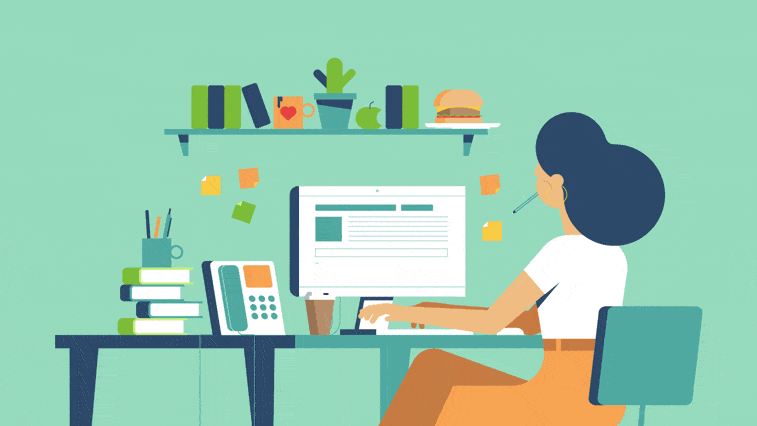
The majority of offices are filthy. The typical workplace desk is home to more than 10 million bacteria, that’s 100x more germs than kitchen tables & 400x less sanitary than the average toilet seat! Whether the bacteria is from home or the office commute, this dirty reality makes offices the ideal environment for spreading bacteria and viruses.
Harmful germs and bacteria rapidly spread from one co-worker to the next, from the common cold to infectious respiratory diseases such as COVID-19, the office harbours tons of microbes and fast tracks their transmission from one person to the next.
Grimy offices are one of the main causes of inefficiency, job dissatisfaction and reduced employee wellbeing. In 2019, we asked more than 2,000 workers whether they rated their office as clean or not – and how it impacted them at work. We found that in offices where employees perceived hygiene to be lacking, 74% of employees said that it impacted their productivity and 25% admitted to taking unnecessary sick leave because they found their work environment depressing.
COVID-19 has served as an eye-opener for how unprepared we are to combat contagious disease – it’s time that we made our offices pandemic-proof. We’ve identified the biggest office germ hotspots, and what you can do to reduce the risk of workplace illness.
Dirty desks
Desks themselves are not the main culprits for bacteria, however, typical desk items, such as phones, keyboards & stationary host a shockingly high amount of harmful germs.
According to a report by the Seattle Times, the typical office phone has 25,127 germs per square inch. If that doesn’t surprise you, we only have to look as far as computer keyboards that are 3x more bacteria-ridden to reveal the harsh bottom line that desks are filthy. The chances of being infected by other people’s germs are multiplied if you desk-share or work in a co-working environment.
What can you do to reduce desk bacteria & prevent the spread of harmful viruses?
- If you’re having lunch at your desk, wash your hands & sanitise before eating
- Clear packaging, crumbs & rubbish quickly rather than leaving them on your desk to attract pests
- Don’t chew your pens! Stationary is one of the main sources of bacteria in the office so try to break the habit
- If you’re desk-sharing, have anti-bacterial wipes ready to clean surfaces & desk items before use
Filthy fridges
Office fridges are an interesting observation of people’s varying definitions of hygiene & cleanliness. Every day, judgements are made on how clean-conscious colleagues are based on their fridge habits. However, studies reveal that when it comes to office fridges, hygiene is the last thing on anyone’s minds with the average workplace fridge going uncleaned for 93 days.
Not only do we run the risk of contracting viruses from items inside fridges by colleagues touching them, keeping foods past their sell-by-date in low-quality fridges can prove a recipe for disaster.
Bacteria thrive in warmer conditions, however, can spread in temperatures that are as cool as 4° C, made worse by uncleaned spillages, increasing the chance of contracting food-borne diseases such as Salmonella & E-coli.
Tips to reduce office fridge bacteria?
- Temperature regulation is a must. Business owners should purchase thermometers for their workplace to keep fridges at the ideal temperature
- The government advises refrigerator temperatures are kept below 4° C
- Regularly check for any out-of-date food & make sure that any expired products are disposed of quickly and correctly
- Businesses can introduce hygiene policies to ensure the regular cleaning of office fridges
Unhygienic door handles
Door handles are one of the most touched spots in an office – from meeting rooms to toilets, it’s almost impossible to avoid office door handles throughout your typical working day. As well as being an office hotspot, they are a chief spreader of viruses like COVID-19. A controlled study found that one germy doorknob can infect half of your entire office within hours.
A further study found that 25% of office workers admit to not washing their hands after using the toilet, making the rapid transmission of viruses such as COVID-19 more likely – especially when employees eat during their working day, quickly spreading viruses throughout the workplace.
What can businesses do to prevent the spread?
- Washing your hands after using the toilet is a must! It’s also recommended that once you touch a door handle in the office to sanitise your hands, preventing the spread of harmful bacteria
- Avoiding touching door handles at work is near impossible, however, using a tissue or sleeve to open doors will help reduce the spread of germs
- Before eating lunch at work, use hand sanitiser gel to prevent dangerous viruses, such as coronavirus from entering your body
Is working from home the new norm?
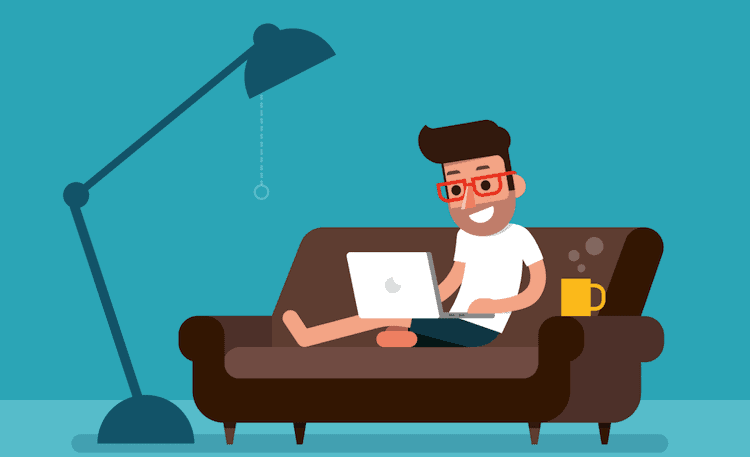
History has taught us that times of extreme uncertainty tend to be followed by radical change. But, as we prepare for life after lockdown, what can we expect in this ‘new normal’.
Our personal and professional lives will be distinctly different, and remote working will be a big part of that. According to Okta, 75% of employees want to continue working from home. Since, remote working has not only proven possible, but beneficial, we expect it to be a common practice in most jobs long after lockdown.
Based on Gartner’s report, most CFO’s will offer employees the option to continue working from home.
It looks like everyone’s a winner. Thanks to flexible working, staff are reporting improved productivity and job satisfaction, translating into increased profits for businesses. Companies that continue working from home will be able to reduce fixed and overhead costs, like reduced real-estate, equipment and supply expenses. No wonder working from home is underpinning the future of work.
Businesses won’t be the only big savers from continued teleworking, employees pockets will be happier too. Having your office within touching distance will save thousands every year by not having to commute to work. Not to mention, the relieving stress of no longer having to have traffic battles and road rage on the office commute.
Simply rolling out of bed and arriving at your home office in a matter of seconds sounds ideal. Not only is remote working more convenient, but you also have the freedom to take care of appoints and run errands usually unmanageable when committing to a 9-5. Whether it’s picking up the kids from school or going on the daily shopping trip, remote working will allow you to take care of your other responsibilities without comprising your job.
Working from home sounds great, right?

But, is it that simple?
Not exactly.
Some critics argue that the convenience of flexible working can’t compensate for what’s lost in creativity and connectedness.
Picture this. You’re at your self-made dining room desk. Sweatpants on. You’ve replayed your work playlist a thousand times. And, it’s been a week since you last interacted face-to-face with someone other than a relative. Suddenly, an office free future doesn’t sound so great.
Once the novelty wears off, some people will crave to work somewhere else, anywhere else!
The blessing of being able to work from home could become a curse – now, you’ll actively need to make a change in scenery. Remote workers have admitted that the exact spot where their day begins, is where they’ll be later in the evening. This is especially true in demanding jobs where working long hours will translate into spending a tremendous amount of time indoors. Even though the long-term impacts are largely unknown, one thing is for sure, they’ll be overwhelmingly negative.
Since lockdown began, employees have been reporting increased productivity.
But is this figure misleading?
There’s strong evidence that working in teams yield better results. We’ve all done it. Whether it’s running in a race or presenting in front of our boss, having an audience spurs us on to perform better. This is backed up by science too. In 1920, social psychologist Floyd Allport found that people worked better in teams, even if they weren’t collaborating, establishing an effect known as ‘social facilitation’. So, employees and businesses alike must ask themselves whether working from home is actually as beneficial as it’s been made out to be.
The bottom line is that remote working will become a big part of our future. Whether it’s more beneficial than working from the office is debatable. The perks of remote working will likely depend on the type of employee, some will enjoy the increased freedom and flexibility but others will long for the days before COVID reshaped the workplace.
Focusing on employee wellbeing

Covid-19 has shown us that we are in no part immune to the virus as there are growing concerns of an impending “tsunami” of mental health problems post-lockdown. The global pandemic has also shone a light on how widespread mental illness is, with a recent study showing that Covid-19 increases the risk of mental illness in children under 5. We must change how we view & deal with mental issues in all aspects of life, and the workplace is without exception.
As we prepare to return to work and with support for long-term remote working grows, mental illness in the workplace is more important than ever. Regardless of how we return to the office, safeguarding measures must be implemented in work environments to ensure employee well-being.
Here’s how…
Improved connectivity among the workforce
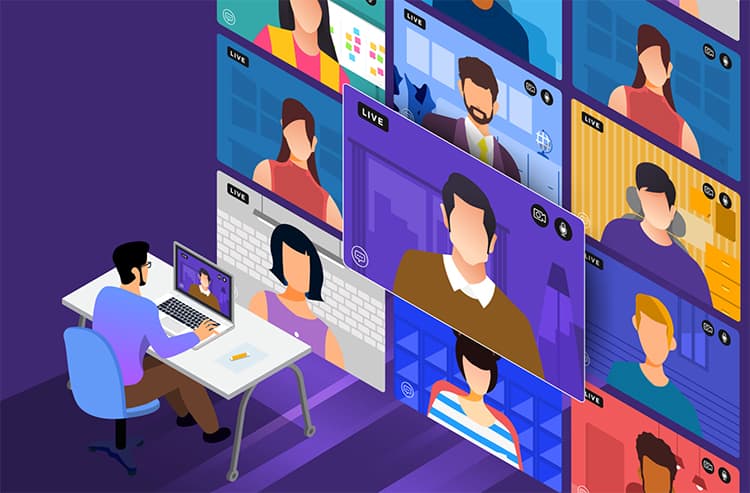
Despite remote working, measures can be implemented in businesses to create a more connected workforce than ever, bridging physical gaps.
Activities that focus on relationship building and encouraging openness among employees can be adapted to online work environments, with the addition of virtual coffee breaks, regular check-ins, virtual mentoring & lunch catch-ups promoting a sense of community that is largely absent from many physical workplaces.
Online communication companies like Zoom and Slack can be used for enhancing the quality of conferences and features such as recording meetings and screen sharing enable all meetings between teams, to begin with, a focus on mental and physical well-being, while features such as pause and playback can be used to ensure all employees don’t fall behind – adding to work stress!
Similarly, organisations can implement a single information source, providing workers with clarity through regular personal & humanised updates – building consistency & trust among teams.
A human touch
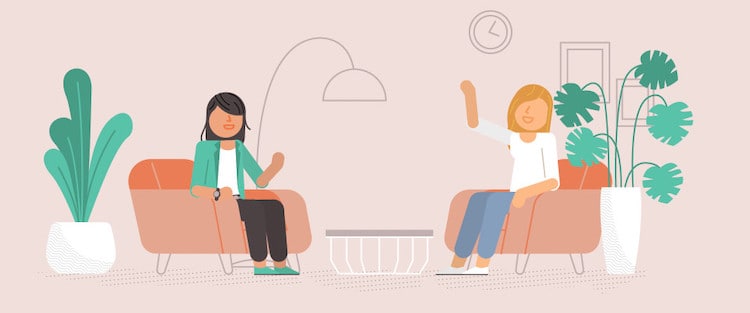
Despite improving connectedness among the workforce virtually, social interaction is critical to good health and longevity – therefore having a human touch to fall back on is equally important in maintaining employee well-being post-COVID. In fact, psychological studies point out that simply talking to someone helps to promote good mental health.
Having a trained workforce dedicated to retaining humanity at work will help improve mental stability & productivity in remote working settings. Whether this is in the form of a dedicated workplace counselling team or throughout the entire workforce, employees working remotely must feel they have a place to go to deal with problems they are experiencing. To achieve this, businesses can implement a training programme that educates & prepares staff on how to approach dealing with mental health concerns and how to show support to staff that may approach them with problems of this nature.
The key to successfully working remotely is to implement measures that build trust, show support & establish a sense of belongingness and openness among employees, promoting a happier & more productive workforce. To achieve this, team leaders & organisers within organisations must take physical action to show readily available support during times of excessive stress or concern.
An era of digital-dependence
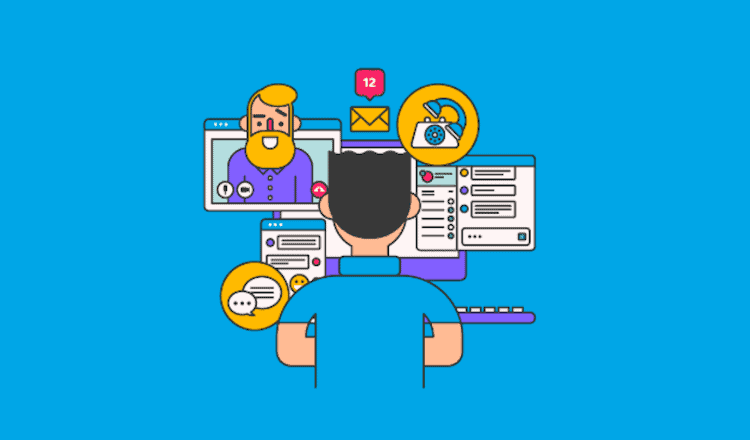
Technology has been critical in the global response to the COVID-19 crisis, and in a post-pandemic world, we will depend on technology more than ever, providing more jobs as we navigate through a contact-free economy.
In the business world, everything that could move online will move online. Huge investments from companies will support remote working beyond lockdown, as teleworking becomes a right, rather than a privilege. Technology won’t just play a role in the virtual world, most aspects of life will rely on technology, from health screens when entering the office to supply chains, technology will be crucial.
In large this will be positive, increasing efficiency, opportunity & profits in businesses. However, overusing technology will result in heightened cybersecurity, psychological and physical risk.
‘Anti-virus’ apps
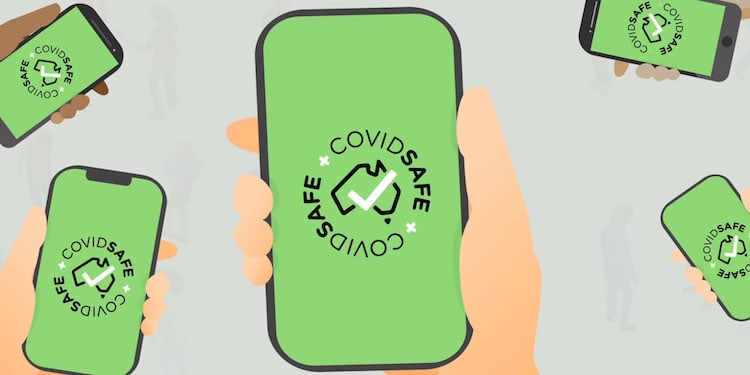
Consulting giant PwC is developing an app for corporates to trace which employees are in close contact and alert human resource departments, what employees are at risk of developing COVID-19.
As workplaces are preparing to re-open, companies are experimenting with different angles on how to deal with the COVID-19 outbreak.
PwC believes that apps such as digital contact tracing is the answer. Using contact tracing, if someone in the office develops the virus, HR can trace which employees they have been in close contact, identifying who is most at risk of developing symptoms.
Governments are already partnering with tech giants such as Apple and Google to help develop these apps with greater accuracy, appeal and privacy protection.
Once workers return to the office, PwC’s app will allow your smartphone to observe and gather information on which employees and how long they were in contact for, analysing these signals and sending recommendations that company leaders can use to amend office layouts and closures.
This app is one example of what is to come.
As discussed earlier, we’ve seen how the office can be a breeding ground for harmful bacteria, fast-tracking the spread of highly contagious viruses like COVID-19 from one employee to another.
We can expect to see the emergence of apps promoting zero-contact making a breakthrough in the workplace, from apps that control light switches to entrance doors, the office will become increasingly reliant on technological advancements than ever.
Are we trapped inside our smartphones?
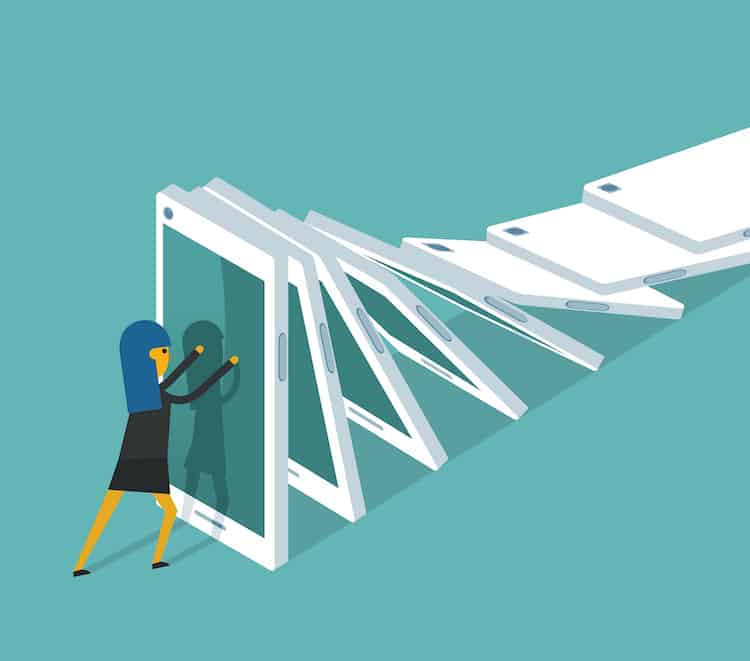
COVID-19 has accelerated technology trends, including digital payments, remote working and distanced learning. However, as we emerge from the post-pandemic world, there are fears we will become ‘digitally dependent’.
What will this mean for us?
Cybercrime & cybersecurity breaches on the rise
The global pandemic has meant that more people are online than ever. For some employees, this will be the first time regularly working from home. Since remote working environments are less secure than the office, businesses are more at risk of cybersecurity breaches than ever before.
Cyber-criminals are actively seeking to exploit the uncertainty caused by the ongoing health crisis and Action Fraud reports show coronavirus related fraud has increased by 400%. This unprecedented increase in cybercrime is alarming for businesses, especially since a post-lockdown work environment is heavily dependent on technology.
What does this mean for businesses?
Businesses that are victims of such cyberattacks may face damages at a time where they are most vulnerable.
Theft of corporate or financial information will incur costs to businesses who need to repair their effected cyber network.
Reputations also suffer. All businesses are based on trust and cyber breaches damage the creditability businesses have built among customers. For instance, Babylon Health suffered a data breach that has damaged the reputation of the trusted app.
Ultimately, when businesses are getting back on their feet, cyber-attacks will put businesses on a back foot at the worst possible time.
Is our relationship with technology an unhealthy one?
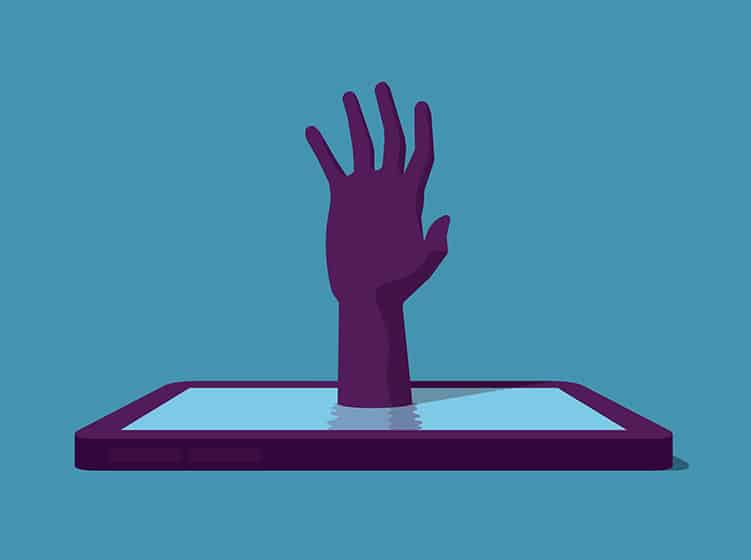
Technology is here to stay. There’s no questioning that. As face-to-face meetings turn into zoom conferences, mailboxes to emails and employees to virtual assistants, technology has taken over a substantial amount of physical work.
As remote working becomes the ‘new norm’, technology will inevitability surround us more than ever.
However, as new technology emerges the digital scene, the negative impacts on the physical and emotional health of a remote workforce become increasingly important.
So…how exactly will employees be affected post-lockdown?
Before smartphones & laptops, working long hours was not something out of the norm. However, as technology has freed us from our desks, we’ve also replaced the natural breaks that would follow leaving the office. From smartphones to laptops, we carry our workload wherever we go – from the commute home to the dinner table, on the toilet and even to bed.
Poor circulation, increased weight, heart problems, higher cholesterol levels, lack of energy, poor sleep, bad concentration, nervous conditions, depression, and so on. With that lot, work should be the last thing on your mind.
Longer hours are great for businesses at least…right?
Wrong.
Overworking employees not only results in a less physically healthy workforce, but they’re also less productive too. In fact, according to research from Stanford University, when a person works more than 55 hours a week, working longer becomes pointless.
The global pandemic will eventually end & normality will resume, with a few significant changes. However, as we become increasingly dependent on technology, the next biggest threat to us might not be a virus, it may be our gadgets.
How will the design of offices change?
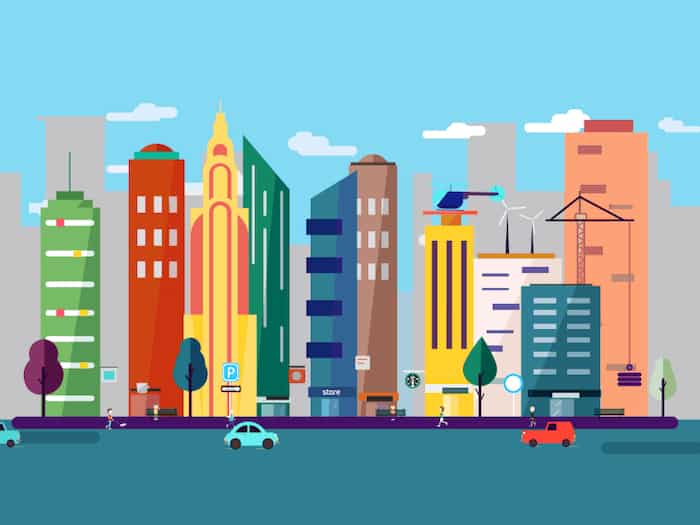
Returning to the workplace will be a surreal experience, with colleagues wearing masks, separated by partitions, anxious to avoid physical contact – no more handshakes or gossiping during lunch breaks.
No longer will the office be a fun and supportive work environment, and instead, may become a lonely experience, as to limit physical contact, businesses will gradually re-introduce employees back to the office, while the majority continue to telework.
Eventually, a ‘new normal’ will emerge. The possibility that lies ahead is making the workplace better than ever before.
Making it safe to return to work
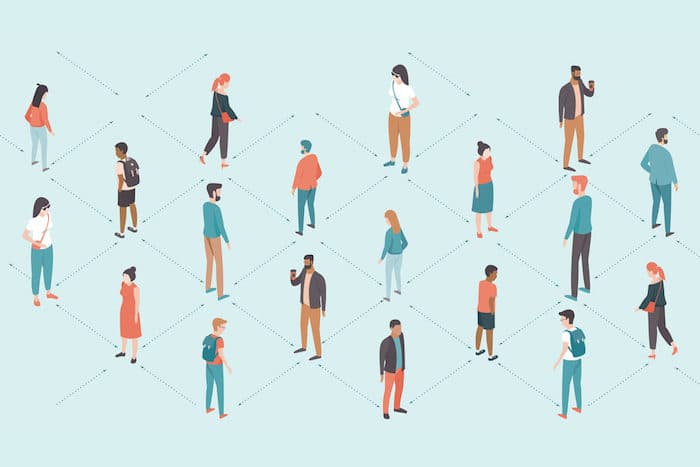
The priority for businesses is for employees to return to work as quickly and safely as possible. People everywhere are concerned about the economic toll the pandemic has had on their finances, making them eager to get back to work to be able to provide for their families once again. But, safety comes first. Therefore, using the current health guidelines, organisations must reshape the office.
What can businesses do?
- Follow the rules! As businesses reopen, they must follow government guidelines outlining that a maximum of 50% of organisation’s workforce are allowed back to work in the first wave of employee returns
- Social distancing is a priority. Businesses can implement design strategies that promote physical distancing like removing chairs, moving desks apart, adding barriers, and implementing signage throughout the workplace
- Draw up or improve your safety and cleaning provisions to support a COVID-friendly workplace
- Ensure that employees that continue to work from home are continually supported and updated on important information that may impact them
- Hygiene friendly fabrics that can be cleaned with bleach can be used throughout the office
A new age of workplace
Future workplace design will experience a shift in focus. Organisations will centre office design on flexibility rather than permanence, a concentration on fluidity instead of fixed.
According to the AAT, flexible workspaces make employees more productive and feel less stressed. We anticipate that all businesses will embrace the trend of versatility, restructuring their spaces for the future. From floor plans to furniture, adaptability will be kept in mind.
What can we expect to see in terms of design?
- According to decorating experts, Direct Painting Group redesigning and redecorating the workplace will be necessary for making substantial changes to offices. We can expect to see more flexible partitions, temporary walls and transitional spaces that meet the evolving needs of businesses as we enter a post-COVID world
- Office furniture will promote flexibility too. Agile furniture, such as transportable furniture that can be combined or downsized for changing needs will become a prominent feature of the modern workplace
- Businesses will begin to look outside. Not only does fresh air boost productivity and ease stress, but it’s also harder for viruses to spread in open spaces. Therefore, expect to see businesses encouraging their workforce to use outdoors to host meetings, breaks or even exercise
Green-proofing your workplace
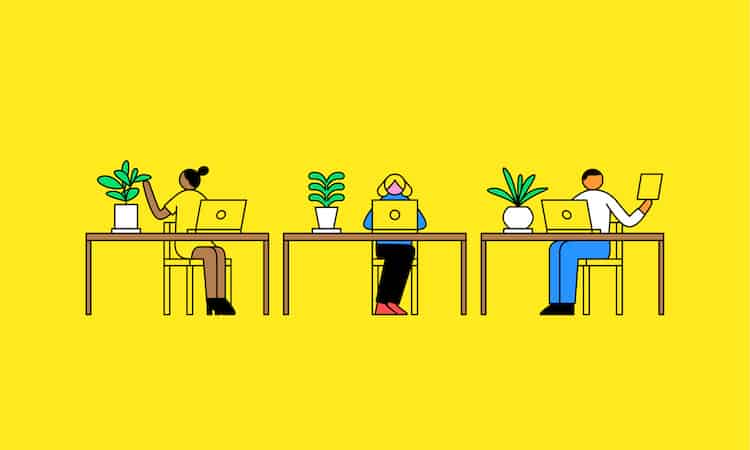
COVID-19 has brought the world economy to a standstill, forcing factories, airlines & the entertainment sector to a halt. From the significant decline in air pollution resulting from reduced air travel to the remarkable decline in carbon emissions emitted from factories, environmental awareness has been brought into focus, shifting how businesses approach eco-friendliness within the office.
As we gradually return to work, ‘green-proofing’ will become a central focus in office design – and research suggests that it will improve efficiency, productivity & motivation of employees.
Okay. But How?
Boosting cognitive stimulation
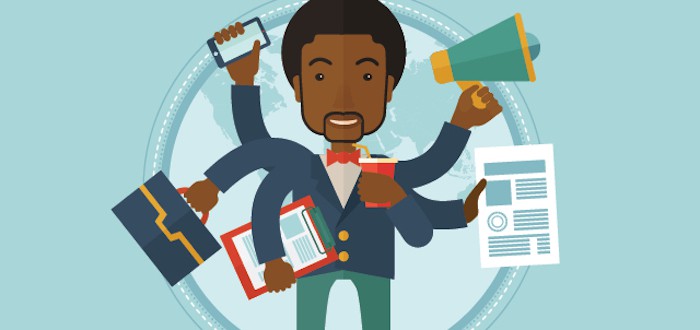
Businesses tend to view investment through a single lens of marginal returns, forcing firms to question how effective green-proofing their office will be. The answer to that question is – very.
A 2016 Havard report showed cognition was boosted by 26% in green workspaces, not only improving employee wellbeing but also how productive they were.
Likewise, an environmentally focused office featuring an increase in light exposure & colour can, in turn, motivate and stimulate your workforce. Employees thrive off of vibrant work environments & improving the sustainability of workplaces will result in higher levels of satisfaction & concentration during working hours. Something as simple as introducing plants to the office has been found by psychologists to improve the efficiency of employees by 15%!
Therefore, green offices providing employees with a refreshing, stimulating & clear working environment are expected to become the new norm in office design – in fact, Workplace design experts, WorkSpace, highlight the importance of eco-friendly offices in design.
How will offices in the post-COVID era promote sustainability?
- Reuse. Recycle
- Implement monthly green challenges to encourage sustainability
Improving employee physical health
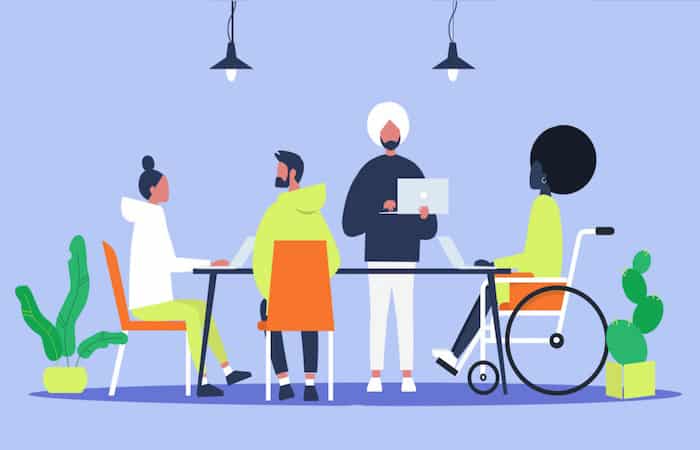
The global pandemic has made people realise the importance of health more than ever. This has driven workplace experts to question how the physical health of employees can be prioritised in the workplace efficiently and cost-effectively. Eco-friendly offices are part of the answer.
According to EPIC’s new Air Quality Life Index, the single greatest threat to human life is air pollution, which directly attributes to life expectancy reducing by two years. Therefore, paying attention to improve the air quality of workplaces could have a major impact on the physical health of employees – especially since the average person will spend 90,000 hours at work over a lifetime.
Call it green energy but something as simple as having a plant on each desk in your office will improve air quality but acting as a natural purifier, filtering toxins and providing cleaner breathing air for employees. Not only do plants improve air quality in the office, promoting a healthy work environment, but organisations report less sick days after implementing sustainable practices in the workplace.
What can businesses do?
- Identify quick wins. Turning off electronics, lights & heating every evening saves energy usage & costs to your business
- Bring a plant to work day. By purchasing plants for employees or encouraging your team to bring their own has a big impact on air-quality & sustainability in the workplace
- Encourage employees to use sustainable transport, such as cycling for their office commute
Going green at home
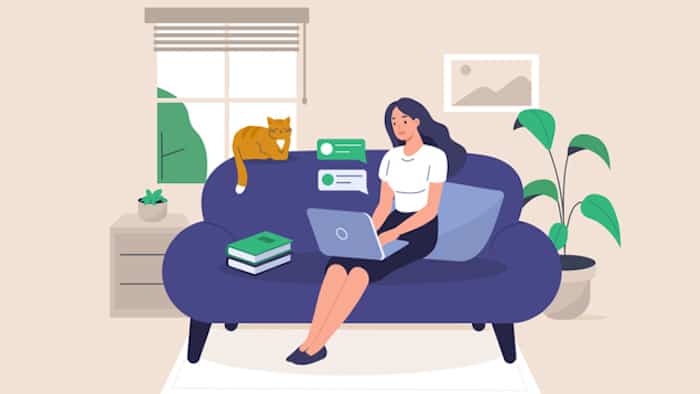
Polls by Workplace identity firm, Okta, have shown that almost 2/3 of people want to continue working from home, and as time goes on, this once impossible task is becoming increasingly likely.
The best thing about boosting how eco-friendly your workspace is that it’s relatively inexpensive to do so.
So, how can you make your new workplace more environmentally-friendly?
- Keep it simple. Buy a few plants to boost your mood, air quality & productivity whilst you work from home
- Move it online. By keeping your paper wastage to a minimum, you’ll be doing your bit in helping the environment
- Reuse. Reuse! Working from home provides new opportunities for you to reuse resources, for instance, instead of buying water bottles, get a water filter for your home office and save money & plastic consumption over time
 About Rocco Falzon
About Rocco Falzon
Rocco Falzon is the Director of Direct Painting Group and Co-Founder of Direct Tiling Group. He shares his industry expertise and thoughts on interior design, decorating and brand engagement and has been featured on titles such as E-Architect.
About Direct Painting Group
Established in 1983, Direct Painting Group is among the leading painters and decorators in London. We specialise in delivering bespoke, high-quality painting and decorating for residential & commercial properties. We pride ourselves on prioritising quality and customer satisfaction in each project we deliver and this has enabled our team to grow & continue to deliver an unrivalled service.


